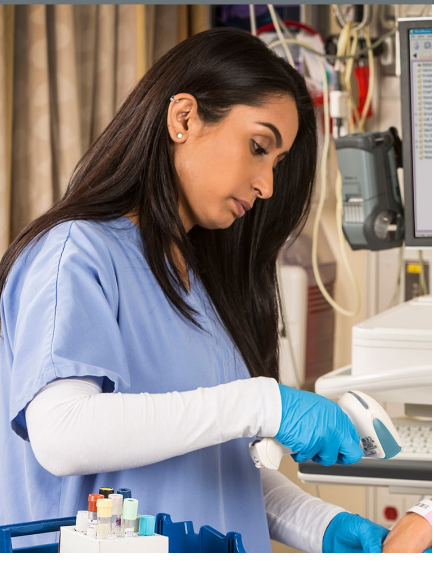The Advantages of Migrating to Cordless Scanners for Healthcare Applications
 Best-in-class healthcare organizations are looking to cordless scanners for their next deployment, but not just for the obvious reasons. The latest generation of cordless healthcare scanners bring with them unique technologies that can truly transform common clinician workflows, making nurse’s more productive and focused, while enabling a higher degree of patient safety.
Best-in-class healthcare organizations are looking to cordless scanners for their next deployment, but not just for the obvious reasons. The latest generation of cordless healthcare scanners bring with them unique technologies that can truly transform common clinician workflows, making nurse’s more productive and focused, while enabling a higher degree of patient safety.
Advantage 1 (The Obvious One): Freedom of movement— nurses need to go to the barcode
Freedom of movement around patients, family members, and expensive equipment—particularly in congested patient wards or ICUs—is a continued challenge for today’s clinician. As more and more technology is packed into the modern-day patient room, free space comes at a premium. Tethering a scanner to a wall-mounted computer or to a workstation-on-wheels (WoW) cart just does not meet the needs of today’ on-the-move nurse. Not every monitor, IV bag, infusion pump, or oxygen line with a barcode is going to be located next to the workstation, so taking the scanner to the barcode is a necessity.
Advantage 2: Free up the nurse’s hands with presentation scanning
A capability currently found only in the cordless Xenon healthcare scanners, presentation mode scanning is dramatically faster than point-and shoot scanning. Eliminating the need to aim and pull the trigger on each scan, presentation mode scanning instead allows the clinician to “present” the items to the scanner. Xenon’s high performance sensors automatically detect objects in its field of view and rapidly scans regardless of angle, orientation, symbology or background material.
Advantage 3: Easier to clean
Cables and cords found in hospital rooms—especially those that come in contact with the floor, hands, bedding, or the patient—carry the most potential for germs. Not only is the cable subject to exposure to bacteria and viruses, it can also be the most difficult component to clean. According to the CDC, one in 25 hospital patients will be infected with a healthcare-associated infection during their hospital stay.1 Going cordless not only saves time on common tasks, but should also reduce the possibility of these infections occurring. Continue reading »




